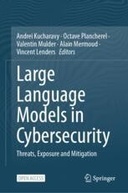Explore

Large Language Models in Cybersecurity
0 Ungluers have
Faved this Work
Login to Fave
This open access book provides cybersecurity practitioners with the knowledge needed to understand the risks of the increased availability of powerful large language models (LLMs) and how they can be mitigated. It attempts to outrun the malicious attackers by anticipating what they could do. It also alerts LLM developers to understand their work's risks for cybersecurity and provides them with tools to mitigate those risks. The book starts in Part I with a general introduction to LLMs and their main application areas. Part II collects a description of the most salient threats LLMs represent in cybersecurity, be they as tools for cybercriminals or as novel attack surfaces if integrated into existing software. Part III focuses on attempting to forecast the exposure and the development of technologies and science underpinning LLMs, as well as macro levers available to regulators to further cybersecurity in the age of LLMs. Eventually, in Part IV, mitigation techniques that should allow safe and secure development and deployment of LLMs are presented. The book concludes with two final chapters in Part V, one speculating what a secure design and integration of LLMs from first principles would look like and the other presenting a summary of the duality of LLMs in cyber-security. This book represents the second in a series published by the Technology Monitoring (TM) team of the Cyber-Defence Campus. The first book entitled "Trends in Data Protection and Encryption Technologies" appeared in 2023. This book series provides technology and trend anticipation for government, industry, and academic decision-makers as well as technical experts.
This book is included in DOAB.
Why read this book? Have your say.
You must be logged in to comment.
Links
DOI: 10.1007/978-3-031-54827-7web: https://link.springer.com/book/10.1007/978-3-031-54827-7
Editions



